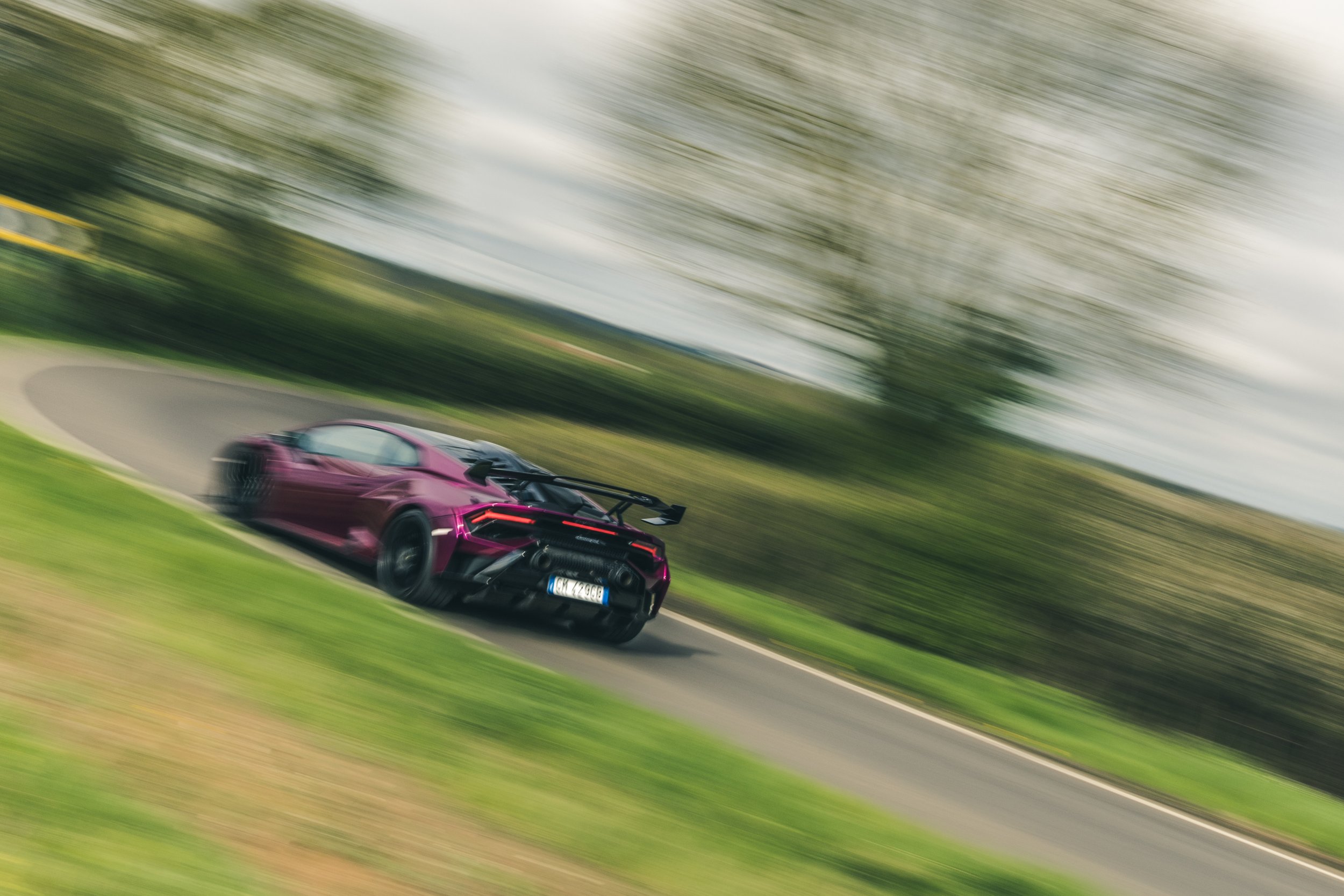
Road Test: Lamborghini Huracán STO
Despite being a big improvement on the old Gallardo, the Lamborghini Huracán has never been the most dynamic supercar compared to its rivals. Until now…
WORDS: Mark Rose | PHOTOS: Dom Ginn
Another Lamborghini Huracán article, Mark? I’ll admit that I’ve covered this car a lot, on four previous occasions to be precise, but bear with me because my reasoning for a fifth stab at Lambo’s V10 supercar is not without good reason.
Firstly, this will more than likely be the final time I get to road test a car that I’ve grown to adore. The Huracán will be going out of production imminently – if not by the time you’re reading this – and with the STO’s days on the UK press fleet numbered to just a handful, I wanted to spend some time with the most hardcore version before the opportunity disappeared entirely.
Secondly, if any of you read one of my previous articles which you can find linked here, you would have seen that I flew to Sardinia to drive the model range in a farewell bid to the V10 engine. Of the Huracáns I drove that day, the STO was the model that I spent the least time in, but it was the one that intrigued me the most. I flew back to the UK wondering what the ultimate, track-spec Huracán was like on our British B-roads, and as a car enthusiast, if there’s an itch to scratch then scratch it I will.
Finally, why would I not want to spend four days with a V10 Lambo?

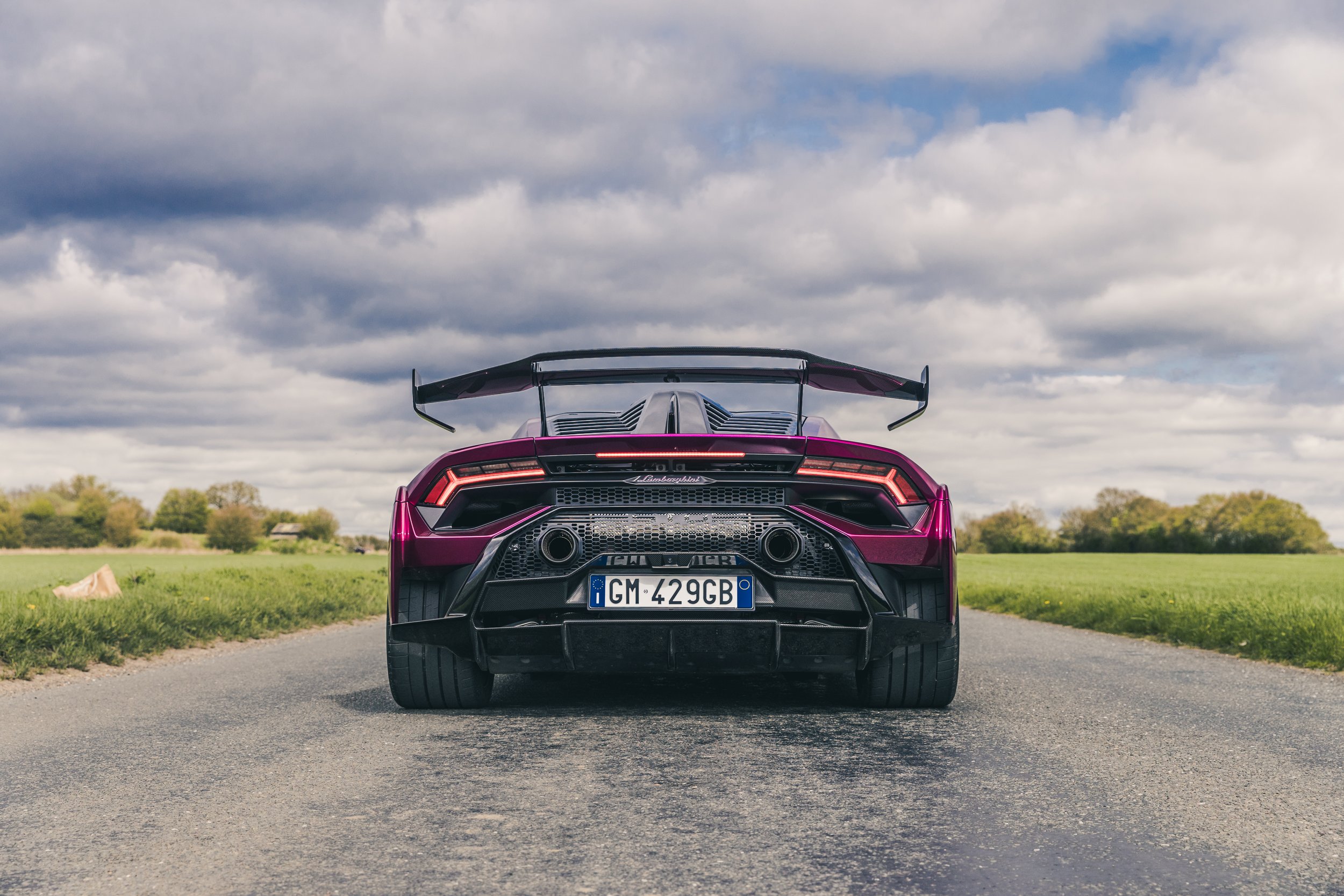
To understand the STO, one must consider what it actually is. The line from Sant’Agata is that it’s a road going Super Trofeo racing car as opposed to a track-honed Huracán. Calling it a homologation special is a stretch, but it certainly captures the spirit of one. As with an actual racing car, everything you see on it has been put there for good reason – that reason being aerodynamics.
The visual changes are extensive, with the obvious one being the massive rear wing which is manually adjustable and generates 420kg of downforce at 174mph. Then there’s the shark fin which improves cornering stability, as well all the other vents, ducts, and flicks of bodywork that improve air flow and aid heat management. It truly is a feast for the eyes, and the result is one of the wildest looking Lambos of the modern era, if not the wildest.
However, the changes aren’t just skin dip. Weight has been stripped out thanks to carbon composite body panels, a sparse interior (there’s not even any floormats), thinner glass and optional magnesium wheels. The four-wheel drive system is also gone with power now sent to the rear wheels only. All told, it weighs just 1,339kg dry.
Combined with 631bhp from its naturally aspirated 5.2 litre V10 engine, what you have is one of the craziest driver’s cars on the planet. A normal Huracán Evo is quite a tame thing: it offers supercar thrills but does so in a predictable way while retaining plenty of usability. The rear-wheel drive models are livelier but still road biased, with the Tecnica turning that up a notch. The STO, however, is its own thing entirely. It is a harder, louder, more engaging, and angrier car than its stablemates, and is one that fully realises the potential of the Huracán platform.
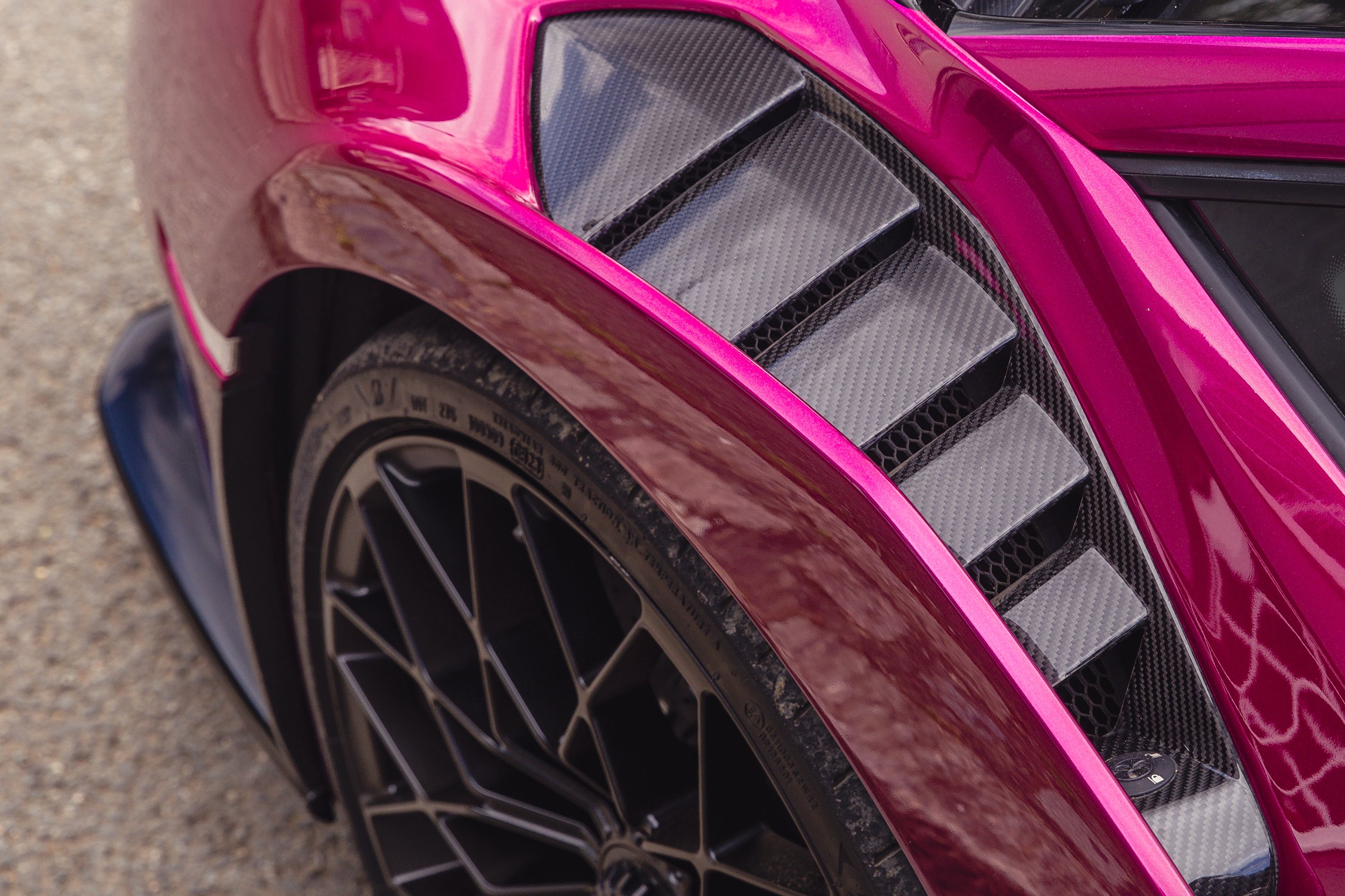
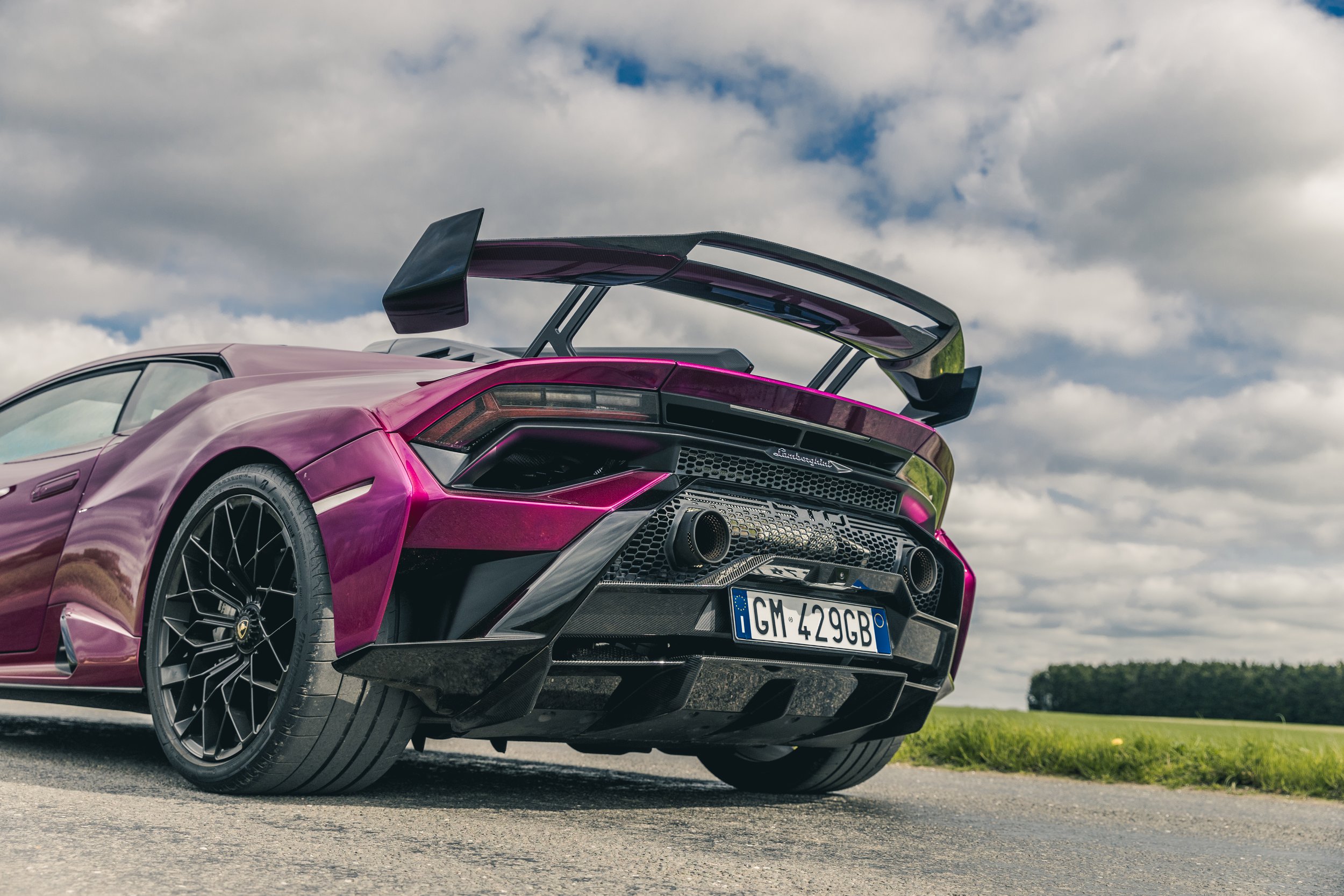
The aero and weight saving measures have transformed it from an approachable supercar in to an absolute animal of a machine. As a road car, it’s pretty compromised. You can’t see out of it all that well, the cabin is pared back, the ride is firm, and the road noise is amplified. If you think all that sounds intimidating then you would be right, but in an oddly charming although sadistic way, it adds to the enjoyment. Behind the wheel, you actually feel like you’re driving a race car which is a feeling that very few performance vehicles offer in this day and age.
Out on the road, the STO is wild but outrageously fun. To get the best from it requires some finessing and self-discipline, but once you’ve sussed it, it rewards you in a way that no other Huracán does, or any other car can, for that matter. It somehow manages to combine real dynamic ability and purity in a package that’s powered by a complete sledgehammer of an engine. In the modern day, that is a very rare thing indeed.
And what an engine it is. Sure, it doesn’t have the outright power and torque of something turbocharged or electrically assisted, but what it gives away in performance it wins back in immediacy and noise. The response is scalpel sharp, to the point where you can control the dynamics of the car with small inputs and corrections of the throttle pedal. But above all, it’s the sound of ten cylinders doing their thing that places the Lambo in a league of its own, and because the weight has been stripped out and the cabin is bare, there’s very little insulation from the fury happening just behind your head. It barks, howls and hisses, and that’s before you get to 6,000rpm at which point it screams its way to an atmospheric 8,500rpm. I don’t care how clever, advanced, and objectively “better” modern performance vehicles are, the excitement offered up by a large, free-revving engine is what truly defines a supercar, and the Huracán happens to be powered by one of the greatest motors ever built. The seven-speed twin-clutch gearbox is also top draw, with whip-crack downshifts and also serves up the occasional kick in the back when changing up.
Of course, the Lambo also needs to be fast in order to make the cut as a supercar, and thanks to the reduced kerbweight and some shorter gearing, the STO feels like the fastest Huracán of the lot. There is an explosive but linear nature to the way it deploys its performance, and while it might not be as quick as a McLaren 750S or Ferrari 296, it still serves up enough performance to make you think twice about using all of it on the public road. It will crack the zero to 62mph sprint in just 3.0 seconds and top out at 193mph, and before you go crying that it’s not a 205mph supercar like other models in the range, remember that all the aero creates drag which blunts top speed, but it will get you round a race track much quicker.
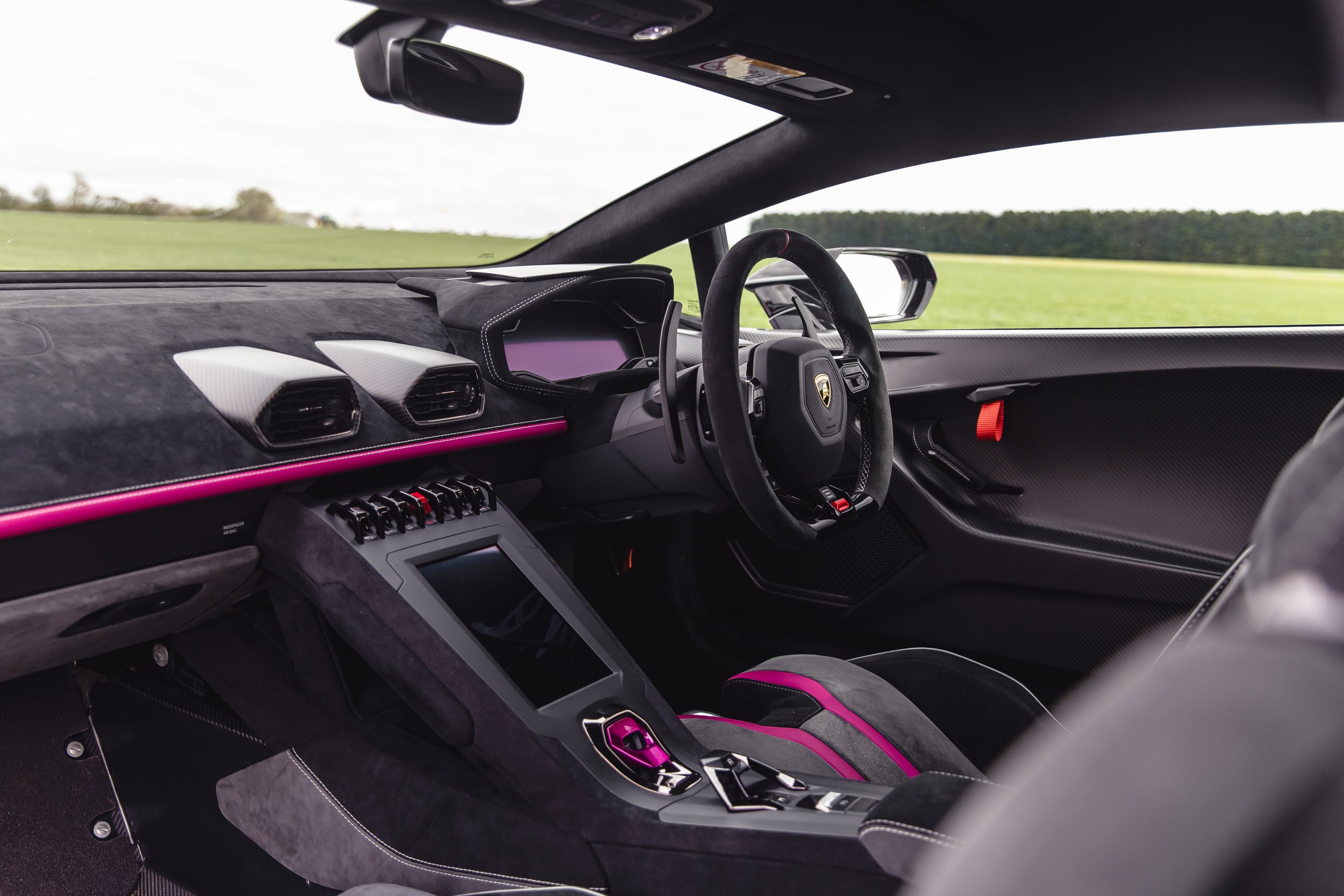
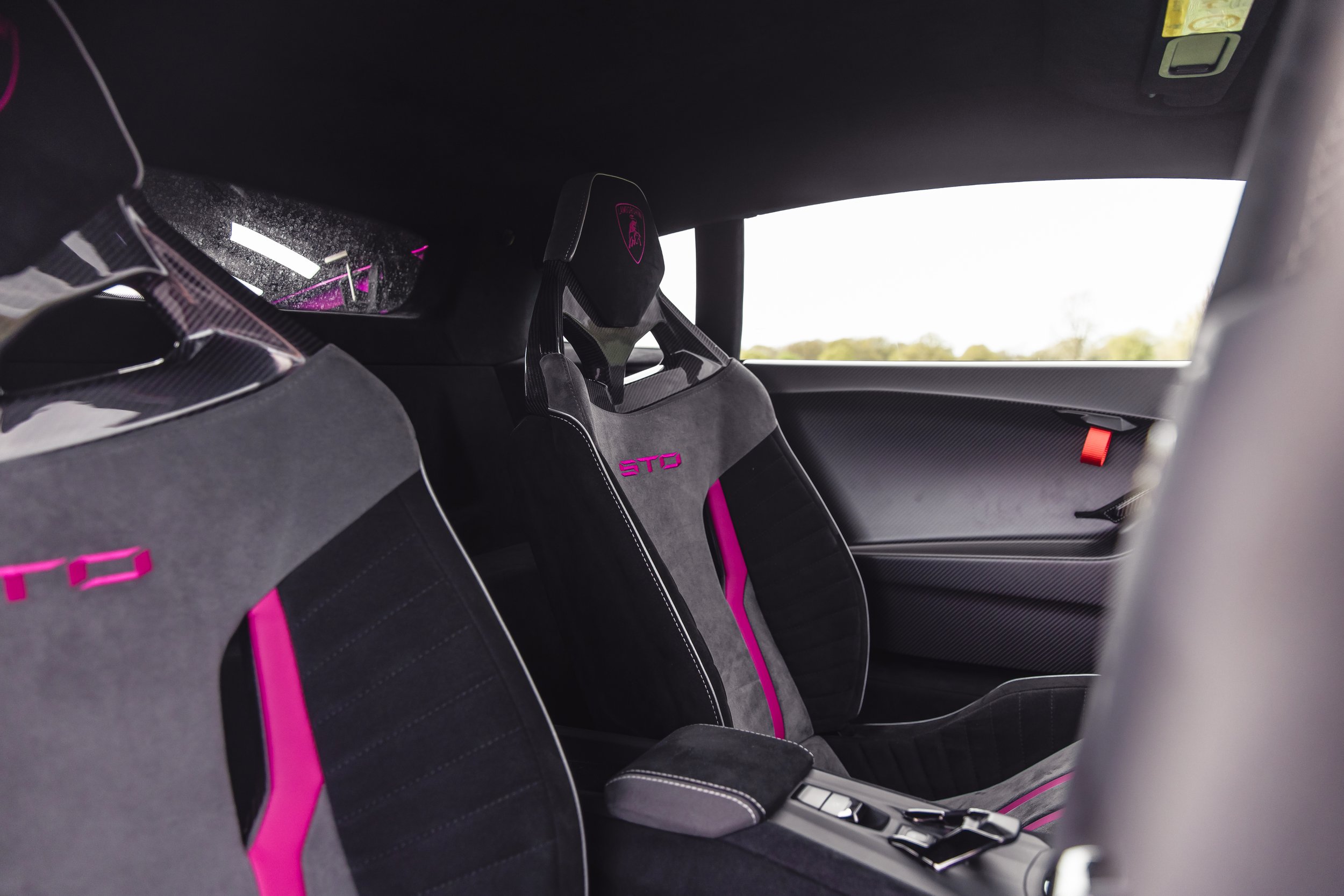
The dark art of aerodynamics doesn’t necessarily present itself on the public road, but there are signs that the car manipulates the air around it to your benefit. Rear-wheel drive Huracáns by nature are, at times, unpredictable, but the STO is easier to judge and feels more keyed in to the road, particularly mid-corner which is where the regular RWD models have a tendency not just for understeer, but oversteer if you get over-zealous with the throttle. I’m in no doubt the STO’s shark fin does indeed aid cornering stability, and it also helps that Lamborghini has removed the Dynamic Steering system. This rear driven Huracan now finally feels like a car capable of offering not just a description of the road surface, but the confidence to push through a corner in the knowledge that it’s not going to spit you out the other side.
Through twists and turns, it changes direction with precision and allows you to carry considerable speed while doing so. A small dab of throttle helps the chassis rotate mid-turn, and you always have a sense of where it is on the road. The lines of communication are such that when it does begin to get out of shape, it gives you ample warning and the opportunity to correct it. It’s fierce but on your side, which isn’t a compliment I’ve previously been able to level at RWD Huracáns. The carbon ceramic brakes from Brembo are also strong, if a little squidgy at the top of the pedal, and the tyre is a bespoke Bridgestone Potenza which offers sensational grip in the dry, although I can’t comment about wet conditions because fortunately it didn’t rain over my four days with the car. Makes a change…
One characteristic of the STO that might be a bit much for some is the ride quality. Now, I personally don’t mind it and the quality of the damping is very good, but it is rather firm and depending on the driving mode you’re in and the road you’re going down, it can border on unforgiving. In STO mode it’s reasonably compliant, but Trofeo is considerably busier and when the road surface does deteriorate the combination of the two can be pretty wild. Having said that, the chassis has so much balance and composure that the car never gets deflected off-line by any of the bumps, it just absorbs them and carries on. It’s also important to remember that Lamborghini views the STO as a racing car for the road, so if you’re not willing to compromise on comfort, then your money is better spent on a Tecnica. The STO is for serious drivers only, if you want to pose then buy something else.
As a driving experience, the most hardcore Huracán is unmatched. Over the years, the V10 Lambo has had a charm of its own, but dynamically has fallen short compared to purer offerings from Ferrari, and particularly McLaren. Now at the end of its life, Lamborghini has given us the greatest Huracán of them all. I’d go as far as saying I would choose it over a 765LT because it offers much of the purity of the McLaren, combined with one of the all-time great internal combustion engines. Wild, theatrical, flamboyant but focussed, the STO is as great a driver’s car as it is a Lamborghini, and that if you ask me, is a match made in heaven.
Engine: V10, naturally aspirated
Displacement: 5,204cc
Power: 631bhp @ 8,000rpm
Torque: 417lb ft @ 6,500rpm
Transmission: 7-speed twin-clutch, RWD
0-62mph: 3.0 secs
VMAX: 193mph
Kerbweight: 1,339kg
Price: £260,000+
Technical Specifications
Undoubtedly the best Lamborghini Huracán there is. In the STO, Lambo has nailed the supercar brief with a machine that’s as exciting to drive as it is to look at, and listen to.
9/10
Verdict & Rating
“The excitement offered up by a large, free-revving engine is what truly defines a supercar”
Watch the YouTube video
